Forty years ago, I had the privilege of serving as a law clerk to Justice William J. Brennan, Jr. during the Supreme Court's 1972-73 Term. It was the year of Roe v. Wade, which was decided forty years ago today. In what has come to be seen as a highly controversial decision, the Supreme Court held that a woman has a constitutional right to decide for herself whether to carry an unwanted pregnancy to term.
Before turning to Roe, some history is in order. At the time the Constitution was adopted, the prevailing view was that human life did not exist until quickening (when the mother first feels movement), which typically occurs at around eighteen weeks, or roughly halfway through a pregnancy. American courts, following the English common law, consistently held that abortion before quickening was not a crime. Let me say that again: At the time the Constitution was adopted, abortion in the first eighteen weekss of a woman's pregancy was lawful.
Abortion rates soared in the mid-nineteenth century, as Americans left the land for industrial jobs. The large families vital to farming became burdens in crowded cities. Abortifacients were widely available from mail-order firms and pharmacists, and newspapers regularly ran ads for products and persons to "cure" pregnancy or "restore menses." Social scientists estimate that twenty percent of all pregnancies in this era were terminated by abortion.
In 1845, however, New York enacted a novel statute that for the first time declared it unlawful for any person to sell any product or perform any procedure with the intent to cause "a miscarriage." The New York law applied without regard to whether the abortion was pre- or post-quickening. Although a dramatic departure from the traditional approach, by the end of the century New York law had become a model for the nation.
Three factors contributed to this change. First, religious perspectives on abortion shifted during the evangelical fervor of the Second Great Awakening of the 1820s and 1830s. The long-standing Protestant understanding about the significance of quickening was increasingly challenged by the impassioned evangelical belief that God creates a separate and distinct human life at the very instant of conception.
Second, members of the medical profession, influenced by religious belief, began to propound the view that embryos are people from the moment of conception. In 1839, for example, Dr. Hugh Lenox Hodge published a widely-read pamphlet in which he confidently asserted that embryos can think and perceive right and wrong. In 1857, Dr. Horatio Storer initiated the "Physicians Crusade Against Abortion," warning that women who have abortions often "become confirmed invalids," develop "fatal organic disease,"and either die or are driven to insanity as a result of "moral shock." Storer denied that women should have any voice in the decision of whether they should carry a pregnancy to term, because during pregnancy a "woman's mind is prone to temporary derangement."
Third, the late nineteenth-century "social purity" movement, which sought to impose conservative religious and moral values on the nation, avidly embraced the anti-abortion cause. Preachers and other moralists demanded that the government prohibit contraceptives, drinking, lotteries and abortion.
The social purists insisted that the desire of women to control their own lives and bodies in the realm of reproduction was the product of a deformed and insatiable appetite for sex.
As one mid-nineteenth century moralist observed about abortion, "If women need not fear pregnancy as an outcome of sexual intercourse, what will keep wives faithful and daughters chaste?" The social purists managed to enact a broad range of federal and state laws prohibiting not only abortion, but also the sale or distribution of any product, device or information that could be used to prevent conception.
Despite these laws women, desperate to care for their families and to control their own lives, continued to seek abortions in ever greater numbers. But now these abortions had to be performed in unsafe circumstances and by less reliable practitioners than when the practice was legal. By the turn of the century, doctors estimated that as many as two million abortions were performed in the United States each year, resulting in the deaths of tens of thousands of women.
In the 1960s and early 1970s a few states, spurred by the efforts of the women's movement to make visible the terrible costs inflicted on women and their families by the late-nineteenth century anti-abortion laws, began to soften their prohibitions on abortion. But because these efforts encountered furious opposition from the Catholic Church progress was slow, even though by this time a substantial majority of Americans believed that women should be able to decide for themselves whether to end an unwanted pregnancy.
When Richard Nixon won the presidency in 1968, he found himself in the happy position of being able to appoint four new justices to the Supreme Court. With those appointments, the era of the liberal Warren Court came to a sudden end and a new conservative era came into being. Nixon's appointment of four new conservative justices -- Warren Burger, Harry Blackmun, Lewis Powell and William Rehnquist -- transformed the Court.
In a series of cases decided the same year as Roe, for example, the four Nixon appointees all voted to reject claims that consenting adults have a First Amendment right to read or view "obscene" materials, that a state's substantially unequal expenditures on different public schools within the state violates the Equal Protection Clause and that laws discriminating against women are presumptively unconstitutional. In these and a host of other decisions the Court's four new conservative justices lived up to their billing.
Given the assertions common in political discourse today about whether the Constitution protects the right of a woman to terminate an unwanted pregnancy, one might naturally assume that the four Nixon appointees opposed Roe v. Wade. In fact, though, three of the four new conservative justices (Burger, Blackmun and Powell) voted to hold the nineteenth-century anti-abortion laws unconstitutional. How could that have been? How could such conservative justices have joined Roe? Given how Roe is perceived today, that seems unimaginable.
What this reveals, and what we inside the Court knew at the time, is that even most of the conservative justices did not think of Roe as a difficult or controversial case. They would never have believed that Roe would still be thought politically divisive today, forty years later.
This was so because the foundation for Roe -- the Court's recognition that individuals have a constitutional right to decide for themselves about matters as fundamental and personal as reproduction -- had been laid years before. Thirty years before Roe, for example, in a case involving state-ordered sterilization, the Supreme Court held in Skinner v. Oklahoma that the right of the individual to make decisions about procreation is "one of the basic civil rights of man."
Eight years before Roe, the Court held in Griswold v. Connecticut that a law prohibiting married couples to use contraceptives violated "a right of privacy older than the Bill of Rights."And only a year before Roe, the Court in Eisenstadt v. Baird held unconstitutional a law prohibiting unmarried individuals to use contraceptives, emphasizing "the right of the individual, married or single, to be free from unwarranted governmental intrusion into matters so fundamentally affecting a person as the decision whether to bear or beget a child."
Thus, by the time the Court decided Roe, there was no serious question about whether the Constitution protects the fundamental right of the individual to decide for herself "whether to bear or beget a child." Put simply, the seven justices in the majority in Roe did not see the existence of such a right as seriously in dispute.
Moreover, as Justice Blackmun explained in his opinion for the Court, the denial of such a right would impose serious harm to women. Blackmun noted, for example, that pregnancy can be harmful to the physical health of the woman, that unwanted "offspring may force upon the woman a distressful life and future," and that "bringing a child into a family already unable, psychologically and otherwise, to care for it" can have devastating consequences both for the woman and the family.
Although there was a public outcry against Roe among Catholics, (the Court was flooded with organized form letters from students in Catholics schools), the general public reaction was positive. Indeed, Americans at the time supported Roe by a substantial margin of 52 percent to 44 percent. Moreover, and surprisingly today, Republicans were much more likely to hold this position in 1973 than Democrats (this was so because the vast majority of Catholics were Democrats).
Of course, much has happened in the forty years since Roe, due largely to critics of the decision like Robert Bork, who denied that the Constitution protects the right of an individual to decide for herself whether "to bear or beget a child," and the successful effort of conservative politicians to exploit Roe as a way to bring Catholics into the Republican Party and to reenergize the Christian evangelical movement.
Roe, however, was a triumph of American constitutional law. It changed the world in a fundamental way, protected the lives of women and strengthened the American family. Those who wish that Roe had never been decided would return us to a world of gender oppression, back-alley abortions and personal degradation.
Today, on its 40th anniversary, roughly 70 percent of Americans approve of Roe v. Wade. This is a much higher percentage than approve of President Obama, the Senate, the House of Representatives, or the Supreme Court. This is the highest percentage of Americans ever who have approved of Roe. It is almost unheard of for 70 percent of Americans to agree on anything, but having reflected on the matter for four decades, they now agree on Roe.
